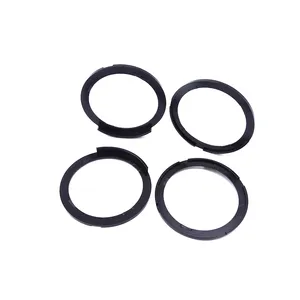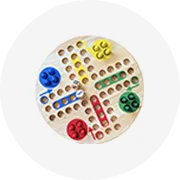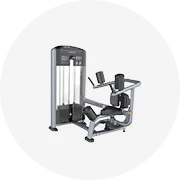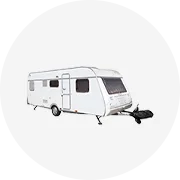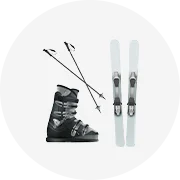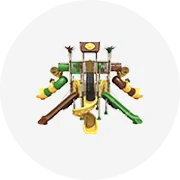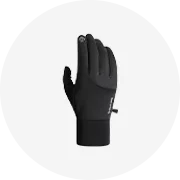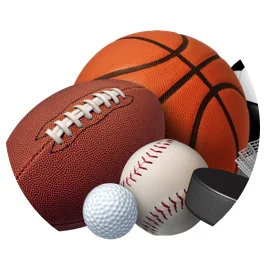Types of Red Handlebars and Their Applications
A red handlebar is more than just a stylish addition to your vehicle or bike—it plays a crucial role in ergonomics, control, performance, and even aesthetics. Whether you're into road cycling, mountain biking, cruising, or motorcycling, selecting the right red handlebar can significantly enhance your riding experience. Below is a detailed breakdown of the most common types of red handlebars, their design features, and ideal usage scenarios.
Road Handlebars (Red Finish)
Designed for speed and aerodynamics, red road handlebars typically feature a curved drop shape that allows multiple hand positions and reduces wind resistance. These are commonly seen on racing and endurance bikes.
Advantages
- Improved aerodynamics
- Multiple grip positions
- Enhanced control at high speeds
- Stylish red finish adds visual appeal
Limitations
- Less comfortable for upright riding
- Not ideal for off-road use
- Limited maneuverability in tight terrain
Best for: Road cyclists, racers, long-distance touring riders
Mountain Bike Handlebars (Red Finish)
Red mountain bike handlebars are wider and often come with a flat or riser profile to provide greater leverage and control over rough trails. The red coating not only enhances visibility but also protects against corrosion.
Advantages
- Excellent control in rugged terrain
- Increased stability at low speeds
- Vibrant red finish boosts visibility
- Durable materials withstand impacts
Limitations
- Heavier than road bars
- May cause wind resistance at high speeds
- Less ergonomic for urban commuting
Best for: Off-road riders, trail enthusiasts, adventure seekers
Beach Cruiser Handlebars (Red Style)
These red handlebars have a high, swept-back design that lets riders sit upright and enjoy a relaxed posture—perfect for casual rides along the beach or through neighborhoods.
Advantages
- Upright, comfortable riding position
- Classic cruiser aesthetic
- Easy to steer and balance
- Perfect for short trips and leisurely rides
Limitations
- Not suitable for fast or competitive cycling
- Limited aerodynamic efficiency
- May feel bulky on sportier bikes
Best for: Casual riders, beach cruisers, city commuters
Motocycle Handlebars (Red Coated)
Red motorcycle handlebars are available in various styles such as clip-ons, ape hangers, and drag bars. They combine functionality with a bold aesthetic that stands out on the road.
Advantages
- Customizable styles for personal flair
- Improved throttle and brake control
- Corrosion-resistant coatings available
- Eye-catching red finish adds style points
Limitations
- Style may affect ergonomics
- Some types not suited for long-distance riding
- Premium options can be expensive
Best for: Custom motorcycles, street bikes, cruiser owners
Drop Bars (Red Finish)
Essentially a subset of road handlebars, red drop bars offer the same benefits with added visual appeal. Their curved design supports aggressive riding stances while maintaining comfort across long distances.
Advantages
- Superior aerodynamics and control
- Multiple hand positions for fatigue reduction
- Popular among professional cyclists
- Red finish gives a modern edge to classic designs
Limitations
- Not beginner-friendly for casual riders
- Less effective in stop-and-go traffic
- Requires proper setup for optimal comfort
Best for: Competitive cyclists, endurance riders, time trialists
Handlebar Grips (Red Variants)
Red handlebar grips are essential accessories that improve both comfort and control. Available in rubber, foam, or silicone, they’re especially popular among motorcyclists and cyclists looking for a bold look and secure grip.
Advantages
- Enhanced grip and vibration damping
- Wide variety of textures and patterns
- Easy to replace or upgrade
- Bright red color adds personality to any ride
Limitations
- Lower quality versions may wear quickly
- Some materials can harden over time
- Color may fade with prolonged UV exposure
Best for: Motorcycles, scooters, mountain bikes, commuter bikes
| Type | Primary Use | Ergonomic Design | Style & Visibility | Recommended For |
|---|---|---|---|---|
| Road Handlebars | Racing, long-distance riding | Aerodynamic drop shape | Modern, sleek red finish | Performance-focused cyclists |
| Mountain Bike Handlebars | Off-road adventures, technical trails | Flat/riser design for control | High-visibility red coating | Trail riders, weekend explorers |
| Beach Cruiser Handlebars | Leisurely rides, short commutes | Swept-back, upright posture | Classic retro red styling | Casual riders, city dwellers |
| Motocycle Handlebars | Street riding, custom builds | Varies by type (clip-on, drag, etc.) | Customizable red finishes | Motorcycle enthusiasts, customizers |
| Drop Bars | Professional cycling, racing | Multigrip curved design | Sporty red accents | Endurance athletes, racers |
| Handlebar Grips | Comfort and control | Textured surfaces for better grip | Vivid red color options | All riders seeking customization |
Expert Tip: When choosing red handlebars or grips, consider not only the aesthetics but also the material quality and compatibility with your vehicle's make and model. High-quality anodized or powder-coated finishes will last longer and maintain their vibrant appearance under varying weather conditions.
Specifications and Maintenance of Red Handlebars
Key Specifications to Consider
Red handlebars are not only a vibrant design element but also a critical component for control, comfort, and performance in both motorcycles and bicycles. Understanding the technical specifications helps you choose the right handlebar for your riding style and vehicle type.
Material Composition
Red handlebars are commonly made from aluminum alloy or steel, each offering distinct advantages based on application:
- Aluminum Alloy: Lightweight, corrosion-resistant, and ideal for performance-oriented bikes where weight reduction is crucial. However, they can be more expensive than steel alternatives.
- Steel: Offers greater durability and cost-effectiveness. While heavier than aluminum, steel provides better shock absorption and is often preferred in utility or off-road vehicles.
Width
The width of red handlebars significantly influences handling dynamics and rider posture:
- Wider Bars (750–800mm): Provide enhanced stability at higher speeds and improved leverage for cornering—ideal for trail riding or touring.
- Narrower Bars (700–750mm): Promote agility and a more compact riding position, making them popular among urban commuters and racers.
Rise
The rise determines how high the handlebars sit relative to the top tube of the frame, directly affecting rider ergonomics:
- Low Rise (20–25mm): Encourages a forward-leaning stance, beneficial for aerodynamics and speed-focused cycling.
- High Rise (30–40mm): Supports a more upright riding posture, which reduces strain on the back and shoulders—perfect for casual or long-distance riders.
Bar Diameter
Diameter affects grip comfort and compatibility with controls:
- Smaller Diameters (22–23mm): Easier to hold for extended periods, especially for riders with smaller hands or those prioritizing comfort.
- Larger Diameters (24–25mm): Offer a more secure grip and are commonly found on performance bikes, though they may require stronger hand strength.
Control Compatibility
Proper compatibility ensures seamless integration with essential components like brakes, throttle, and gear shifters:
- Ensure the handlebar has sufficient clearance and mounting points for all necessary controls.
- Some handlebars come pre-drilled or feature modular designs to accommodate accessories such as lights, GPS mounts, or mirrors.
Handlebar Shape
The shape of red handlebars greatly impacts riding style and comfort:
- Straight Bars: Provide a neutral, upright position ideal for city biking and light trails.
- Riser Bars: Elevated ends offer better control and comfort on rough terrain, making them popular for mountain bikes.
- Drop Bars: Allow multiple hand positions and are used primarily in road cycling for aerodynamic efficiency.
- Bullhorn Bars: Extend forward for an aggressive riding stance, often seen on fixies and minimalist urban bikes.
| Specification | Importance | Selection Tips |
|---|---|---|
| Material Type | High | Choose aluminum for lightweight performance; opt for steel when durability and cost are priorities |
| Width | High | Select wider bars for stability, narrower for agility |
| Rise | Medium | Consider high-rise bars for comfort, low-rise for speed |
| Diameter | Medium | Match diameter to hand size and control requirements |
| Compatibility | High | Ensure proper fitment with existing bike controls and accessories |
| Shape | High | Pick shape based on riding style and desired hand positioning |
Essential Maintenance Practices
Regular maintenance of red handlebars ensures safety, longevity, and optimal performance. Here are key practices to follow:
Important: Always inspect and maintain all handlebar components together rather than individually. Uneven wear or mismatched parts can compromise safety, performance, and aesthetics. When replacing one part, consider evaluating the entire system for consistency and reliability.
How to Choose Red Handlebars for Your Bicycle
Selecting the perfect red handlebars involves more than just aesthetics—it's about matching your riding style, comfort needs, and bike specifications. The right handlebars can significantly improve control, ergonomics, and overall performance.
Riding Style
The type of cycling you engage in determines the ideal handlebar shape and positioning. Different styles prioritize aerodynamics, comfort, or control.
- Road Racing: Drop handlebars offer multiple hand positions and an aerodynamic posture
- Mountain Biking: Flat or riser handlebars provide better leverage and control on rough terrain
- Commuter/City Cycling: Cruiser or flat bars promote upright posture and ease of use in traffic
- Time Trials: Aerobars reduce wind resistance for maximum speed
Pro tip: Test different styles if possible—ergonomic fit is highly personal
Material Selection
Handlebar material impacts weight, durability, vibration damping, and cost. Each material offers unique benefits that should align with your usage demands.
- Aluminum: Lightweight and affordable but less forgiving over long rides
- Steel: Durable with excellent vibration absorption but heavier
- Carbon Fiber: Light, stiff, and dampens road vibrations effectively
- Titanium: Offers strength-to-weight ratio and fatigue resistance at premium cost
Important: Carbon fiber requires careful torque settings to prevent damage
Width and Grip Considerations
Handlebar width directly affects steering precision, stability, and shoulder alignment. Finding the correct size ensures proper biomechanics and reduces fatigue.
- Measure shoulder width for optimal starting point
- Riser bars (mountain bikes): 700mm–800mm common range
- Drop bars (road bikes): Typically match rider height to reach 40cm–46cm widths
- Grip diameter should match hand size for secure hold
Warning: Excessively narrow bars can cause wrist strain and poor weight distribution
Bar Shape and Ergonomics
Handlebar geometry influences hand position, aerodynamics, and muscle engagement during rides. Each design serves specific functional purposes.
- Flat Bars: Common on MTBs for direct steering and upright posture
- Riser Bars: Elevated design improves control on technical trails
- Drop Bars: Enable multiple hand positions for endurance riding
- Bullhorn Bars: Offer forward hand placement for speed-focused city cyclists
Design note: Swept-back designs enhance comfort in cruiser bikes
Fitting Tip: When installing new red handlebars, consider professional fitting services to optimize reach, stack height, and control component alignment. Even minor adjustments can make a significant difference in comfort and efficiency over time.
| Riding Type | Recommended Shape | Ideal Width Range | Preferred Material |
|---|---|---|---|
| Trail Mountain Biking | Riser | 750-800mm | Aluminum or carbon composite |
| Road Racing | Drop | 400-440mm | Carbon fiber |
| Urban Commuting | Flat/Bullhorn | 600-660mm | Aluminum alloy |
| Long Distance Touring | Dropper/Butterfly | 650-700mm | Steel or titanium |
Compatibility & Installation
Ensuring proper compatibility between your red handlebars and existing components is crucial for safe and effective operation. Pay attention to these critical interface points:
- Stem clamp diameter (common sizes: 25.4mm, 31.8mm)
- Brake lever mounting compatibility (flat vs. drop bar systems)
- Shift cable routing options
- Accessories mounting points (lights, computers, etc.)
Installation reminder: Always follow manufacturer torque specifications when tightening clamps
DIY Replacement Guide for Red Motorcycle Handlebars
Replacing your motorcycle's handlebars with a vibrant red set can enhance both the appearance and ergonomics of your ride. This guide provides detailed, step-by-step instructions to help you complete this project safely and effectively at home.
Safety Warning: Always disconnect the battery before working on electrical components and ensure the motorcycle is stable during disassembly. Wear protective gloves and eyewear to avoid injury from sharp edges or unexpected drops.
Comprehensive Replacement Steps
- Gather the Necessary Tools and Materials
- Ensure you have a ratchet set, combination wrenches, Allen wrench set, torque wrench (for precision tightening), flathead and Phillips screwdrivers, zip ties, and electrical tape.
- Prepare new red handlebars that are compatible with your motorcycle model and year. Check specifications such as diameter, sweep angle, and mounting style.
- Optional: Grips, bar ends, or additional accessories if upgrading alongside the handlebars.
- Secure and Prepare the Motorcycle
- Park the bike on a level surface and engage the parking brake (if applicable).
- For added stability, place the motorcycle on a center stand or maintenance stand to prevent tipping during work.
- Disconnect the negative terminal of the battery to avoid short circuits or accidental activation of electrical systems.
- Remove Accessories and Control Components
- Carefully loosen and slide off the handlebar grips. Place them in a safe location to avoid damage.
- Use a soft cloth or rag to protect the fuel tank while placing removed components like mirrors and turn signals on top.
- Unplug all electrical connectors related to switches and controls. Label each connector with a small piece of tape for easier reinstallation.
- Wrap disconnected wires in a clean rag to prevent dirt buildup or accidental contact with other parts.
- Loosen the Fork Clamp Bolts
- Locate the fork clamp bolts on the bottom triple tree—these secure the handlebars to the steering head.
- Using an Allen wrench or socket wrench, carefully loosen these bolts without fully removing them yet.
- This step allows the handlebars to be lifted out without damaging the steering assembly.
- Remove the Old Handlebars
- Cut or remove any zip ties securing cables or wiring harnesses to the old handlebars.
- Inspect the handlebar risers and use the appropriate wrench or socket to fully remove the mounting bolts.
- Gently lift the old handlebars upward and out of the clamps. Be cautious not to drop or scratch nearby components.
- Install the New Red Handlebars
- Align the new red handlebars with the motorcycle’s centerline to ensure straight positioning.
- Route all cables and wiring harnesses following the same path as the original setup to maintain functionality and aesthetics.
- Slide the handlebars into the riser clamps and begin threading the bolts by hand to avoid cross-threading.
- Tighten the bolts gradually using a torque wrench, following the manufacturer’s recommended torque specifications.
- Double-check that all control switches, buttons, and levers are properly aligned and functional after installation.
- Reconnect Accessories and Controls
- Reattach all previously disconnected electrical connectors, ensuring they click securely into place.
- Slide the grips back onto the handlebars and rotate them into your preferred position for comfort.
- Reinstall mirrors, turn signals, and any other accessories you removed earlier, making sure they are tightened appropriately.
- Verify Alignment and Functionality
- Check the handlebar alignment visually and make minor adjustments if necessary.
- Test all switches, including headlights, horn, turn signals, and throttle response to confirm proper operation.
- Ensure brake and clutch levers move freely and return smoothly when released.
- Reconnect the Battery
- Once all connections and adjustments are confirmed, reconnect the negative battery terminal securely.
- Turn on the ignition and verify that all lights and instruments function correctly.
- Perform a Test Ride
- Before riding at higher speeds, take the motorcycle for a short test ride in a controlled environment.
- Pay attention to how the handlebars feel, ensuring they provide comfortable reach and control.
- If anything feels off—like uneven turning or stiff controls—return to your workspace and make adjustments as needed.
| Stage | Key Actions | Common Mistakes | Essential Tools |
|---|---|---|---|
| Preparation | Select correct handlebar size, gather tools, disconnect battery | Mismatched handlebar dimensions, missing specialized tools | Ratchet set, Allen wrench, screwdrivers, torque wrench |
| Disassembly | Label connectors, remove accessories, loosen clamps | Forgetting labels, dropping components, over-tightening bolts | Electrical tape, zip ties, rag protection, marking tools |
| Installation | Align handlebars, route cables, torque bolts properly | Cross-threading, improper cable routing, misalignment | Torque wrench, cable ties, Allen keys |
| Testing | Function checks, test ride, final adjustments | Rushing testing phase, ignoring minor issues | Basic tools for quick adjustments |
Pro Tip: Consider applying dielectric grease to electrical connectors before reattaching them to prevent corrosion and improve conductivity. Also, double-check your local laws regarding handlebar height and modifications to ensure compliance with safety regulations.
Frequently Asked Questions About Red Motorcycle Handlebars
The most common material used for red motorcycle handlebars is steel, particularly carbon steel. Steel offers excellent strength and durability while remaining cost-effective for manufacturers and consumers. It can withstand the rigors of various riding conditions, including off-road adventures, daily commuting, and long-distance touring.
In addition to steel, some high-performance or custom handlebars may be made from aluminum alloys or titanium, which offer weight savings but come at a higher price point. However, due to its balance of performance and affordability, steel remains the industry standard for most motorcycle handlebar applications, especially in entry-level and mid-range bikes.
Yes, red bicycle handlebars are available in a variety of sizes to suit different types of bicycles and rider preferences. The key dimensions to consider when selecting handlebars include:
- Width: Measured from end to end, typically ranging from 540mm to 800mm depending on the bike type (e.g., narrow for road bikes, wider for mountain bikes).
- Rise: The vertical height of the handlebar from the centerline of the grips to the mounting clamp area.
- Sweep: The angle of the grip area relative to the rest of the bar, affecting hand position and comfort.
- Diameter: Most modern handlebars have a 31.8mm diameter clamp area, though older models may use 25.4mm or 35mm standards.
Choosing the right size ensures proper ergonomics, control, and comfort during rides. Many manufacturers also offer adjustable or riser bars that allow riders to customize their setup further.
Red motorcycle handlebars can technically be installed on any bike type, but compatibility with the bike's specific mounting system and intended usage is crucial. Factors to consider include:
- Mounting Clamp Size: Ensure the handlebar has the correct diameter to fit your bike’s triple clamps (common sizes include 28.7mm, 32mm, and 35mm).
- Handlebar Style: Different bikes require specific handlebar shapes – such as flat bars for dirt bikes, swept-back bars for cruisers, or clip-ons for sportbikes.
- Ergonomic Fit: The handlebar should provide a comfortable reach and riding posture suited to your body type and riding style.
- Strength Requirements: High-performance or heavy motorcycles may need reinforced handlebars to handle greater stress compared to lighter bikes.
If you're planning to install red handlebars on your motorcycle, always verify that they meet both mechanical and aesthetic requirements. Custom fabrication or adapters may sometimes be needed to achieve a perfect fit.







